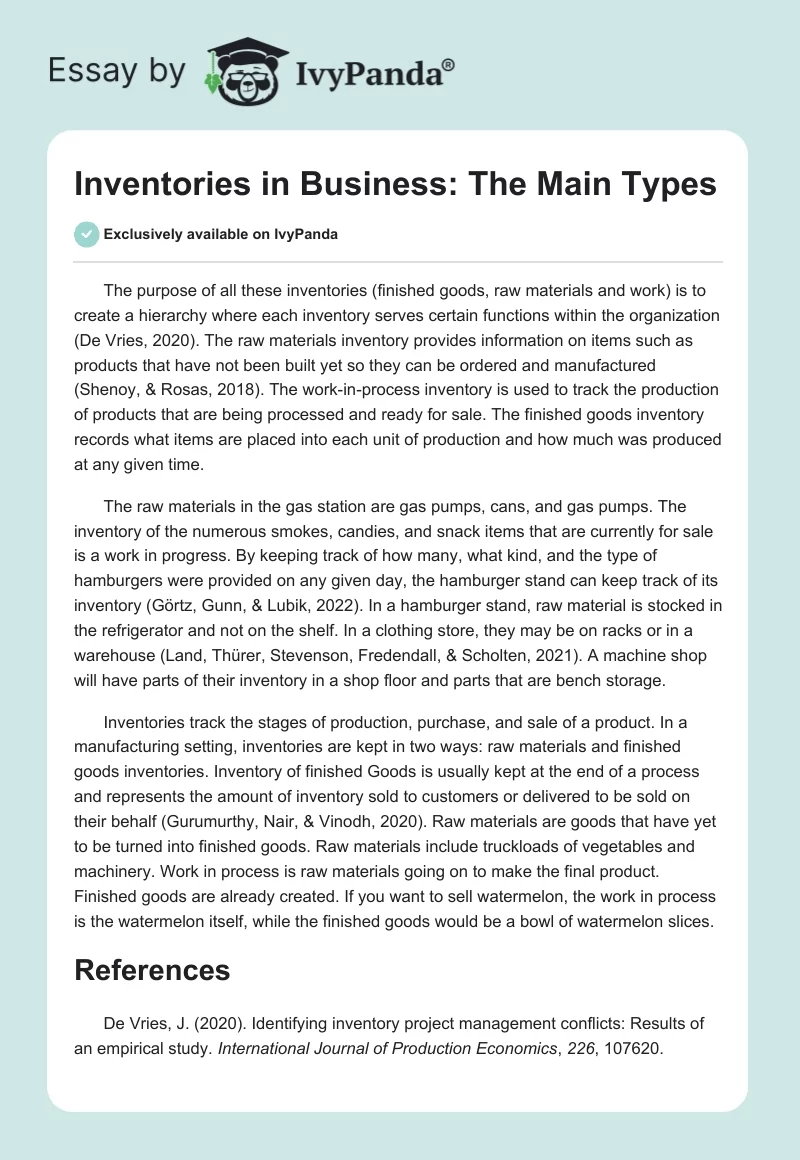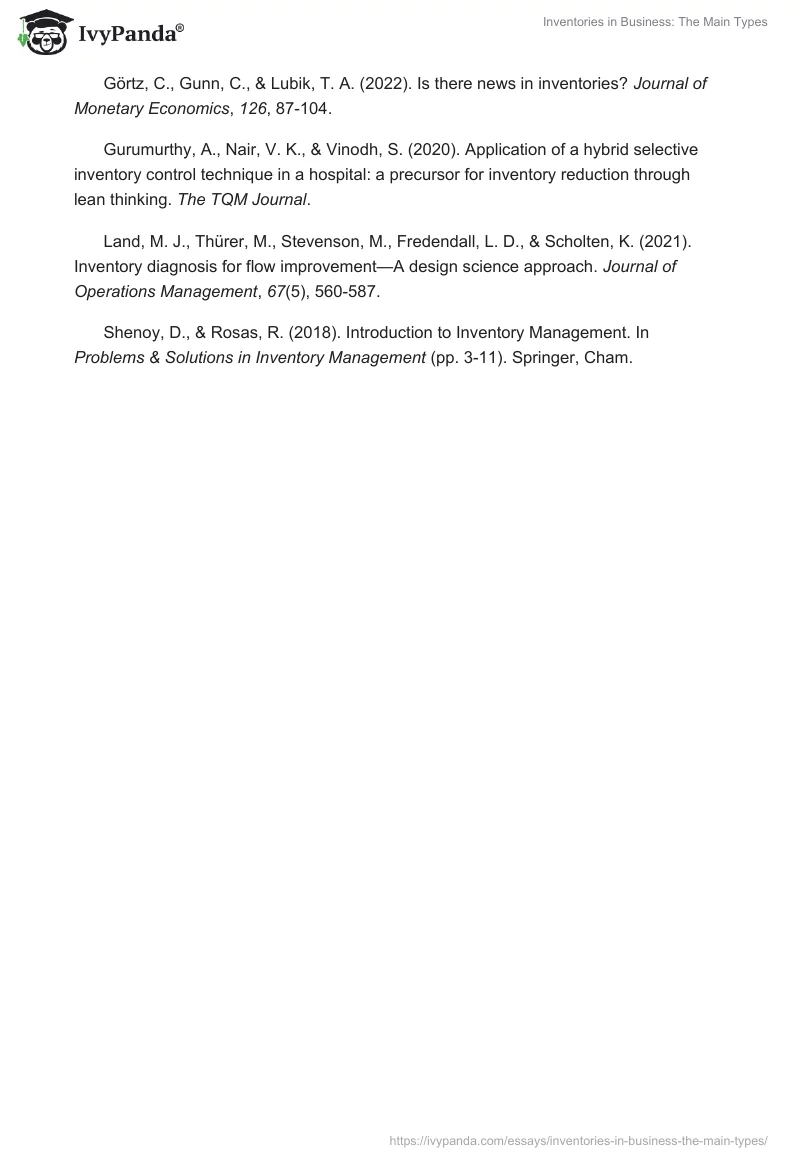The purpose of all these inventories (finished goods, raw materials and work) is to create a hierarchy where each inventory serves certain functions within the organization (De Vries, 2020). The raw materials inventory provides information on items such as products that have not been built yet so they can be ordered and manufactured (Shenoy, & Rosas, 2018). The work-in-process inventory is used to track the production of products that are being processed and ready for sale. The finished goods inventory records what items are placed into each unit of production and how much was produced at any given time.
The raw materials in the gas station are gas pumps, cans, and gas pumps. The inventory of the numerous smokes, candies, and snack items that are currently for sale is a work in progress. By keeping track of how many, what kind, and the type of hamburgers were provided on any given day, the hamburger stand can keep track of its inventory (Görtz, Gunn, & Lubik, 2022). In a hamburger stand, raw material is stocked in the refrigerator and not on the shelf. In a clothing store, they may be on racks or in a warehouse (Land, Thürer, Stevenson, Fredendall, & Scholten, 2021). A machine shop will have parts of their inventory in a shop floor and parts that are bench storage.
Inventories track the stages of production, purchase, and sale of a product. In a manufacturing setting, inventories are kept in two ways: raw materials and finished goods inventories. Inventory of finished Goods is usually kept at the end of a process and represents the amount of inventory sold to customers or delivered to be sold on their behalf (Gurumurthy, Nair, & Vinodh, 2020). Raw materials are goods that have yet to be turned into finished goods. Raw materials include truckloads of vegetables and machinery. Work in process is raw materials going on to make the final product. Finished goods are already created. If you want to sell watermelon, the work in process is the watermelon itself, while the finished goods would be a bowl of watermelon slices.
References
De Vries, J. (2020). Identifying inventory project management conflicts: Results of an empirical study. International Journal of Production Economics, 226, 107620.
Görtz, C., Gunn, C., & Lubik, T. A. (2022). Is there news in inventories? Journal of Monetary Economics, 126, 87-104.
Gurumurthy, A., Nair, V. K., & Vinodh, S. (2020). Application of a hybrid selective inventory control technique in a hospital: a precursor for inventory reduction through lean thinking. The TQM Journal.
Land, M. J., Thürer, M., Stevenson, M., Fredendall, L. D., & Scholten, K. (2021). Inventory diagnosis for flow improvement—A design science approach. Journal of Operations Management, 67(5), 560-587.
Shenoy, D., & Rosas, R. (2018). Introduction to Inventory Management. In Problems & Solutions in Inventory Management (pp. 3-11). Springer, Cham.


